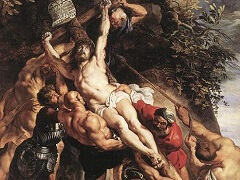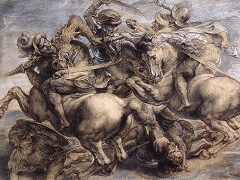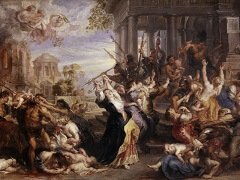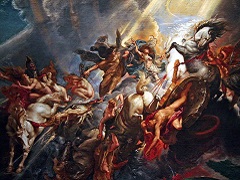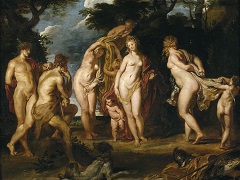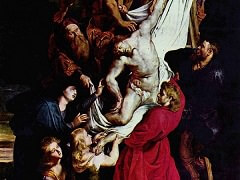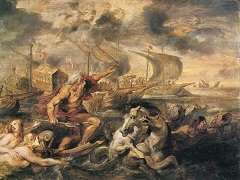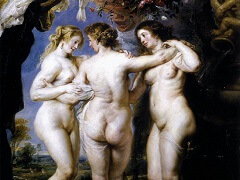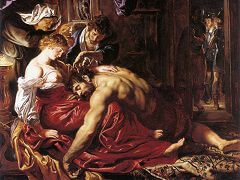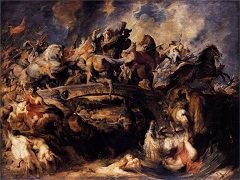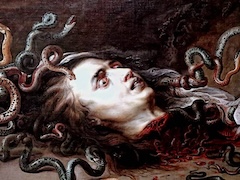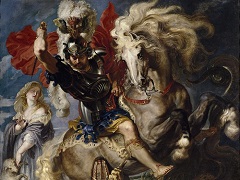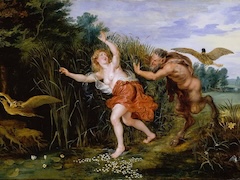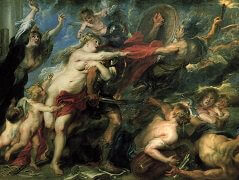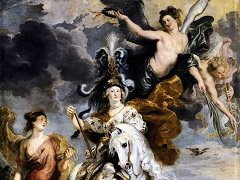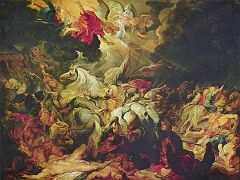The Triumph of Juliers, 1622 by Peter Paul Rubens

Widow of King Henry IV, mother to the next king of France, and daughter of the grand duke of Tuscany and archduchess of Austria, Marie desired a series that would commemorate her own achievements. By mixing allegory and h istory, Rubens - with the assistance of Marie herself - crafted a magnificent collection of heroic images marking the significant moments in the queen mother's life.
The Marie de' Medici Cycle was based on similar series dedicated to the classical ideals of kingship and good government. Because this set was created for a powerful woman, however, the traditional iconography of masculine authority had to be adjusted. So, for instance, in place of references to strength and martial prowess, Rubens alluded to Marie's grace and good education. In The Triumph of Juliers, pictured here, Rubens depicts Marie in a version of the traditional equestrian portrait generally reserved for leaders in war. Wearing the helmet of Athena (Goddess of War) and wielding the marshal's baton, Marie sits atop a magnificent white steed. A figure representing Magnanimity trails behind, while above, Victory readies to place a laurel wreath on her head and Fame blows energetically on a trumpet. It has been suggested that the allegorical nature of the work would have made Marie's usurpation of this and other masculine roles palatable. In any event, it should be noted that the former queen is dressed in a rich gown, wears her typical pearl jewelry, maintains the pale complexion associated with female beauty, and sits side-saddle on her horse.
In addition to addressing atypical challenges presented by Marie's sex, Rubens also needed to depict events in a way that would present her in the best light. Sometimes this required the manipulation of historical realities. In The Triumph of Juliers, for instance, Marie would seem to be responsible for the formal accord between warring armies that takes place in the middle ground. In fact, although she supported the Protestant princes who won the battle for Juliers (September 1, 1610) against the imperial Catholic forces, Marie arrived late to the fight, playing almost no role in the actual outcome.

